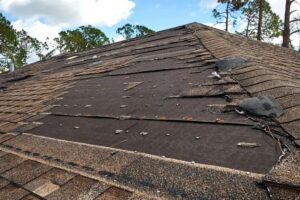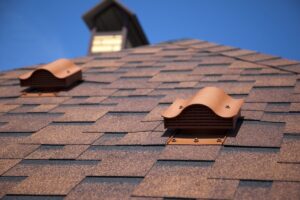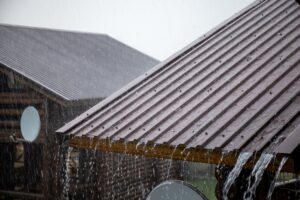An investment in new windows is worth it for your long-term home comfort. When considering window installation and upgrading to a more energy-efficient model, you can save money on utility bills and enjoy the benefits of warmer rooms during the winter months and cooler ones during the summer.
If you’re considering replacing some or all of your existing windows, here’s what you need to know before getting started with your window installation project.
What is Window Installation
Window installation is the process of installing new windows in your home. You can hire a professional contractor to do the job for you.
The window installation process can be tricky if it’s done incorrectly. It’s important to understand what type of window will work best for your home. Do this before beginning this project so that everything goes smoothly and safely.
What To Expect From Your Window Installation Project
- You’ll be asked to provide details about the windows you want installed. The contractor will come to your home and measure the windows. They will provide an estimate, and bring samples of the different window types for you to choose from.
- Once you’ve selected the right windows for your space, he’ll give you an estimate for the job. He will confirm that he can install them on time when you need them in place. Especially if there’s an upcoming holiday party. Or other events coming up where guests are expected at your house in advance.
- When it comes time for installation day (which should be within 1-3 weeks), they’ll arrive with all the necessary tools. A ladder if necessary, caulking guns, and hammers in case they need extra leverage while removing old windows. They will also bring safety glasses and goggles if necessary (for example when working around chemicals).
Different Types of Windows for Your Window Installation Project
So, you’re ready to install some new windows. Great! The first step is deciding what type of window best suits your needs. Below are the four main types of windows.
Double hung windows
These have two sashes (the glass panels) and can be opened from either the top or bottom.
Sliding windows
These open by moving horizontally across a track on the side or top of them.
Casement windows
These open outward from the center using a crank handle. As opposed to swinging inward like most other types of windows do. They pivot out at an angle to fully open or close them completely. This gives them their name (“casement” comes from “case,” which means “container” in French).
Picture windows
Picture-style windows typically span between two adjacent walls. These are made up of several panes that slide horizontally into place when unlocked. Although some versions require lifting weights inside each pane.
Like casement options, picture-style windows don’t swing inward as other types do. They slide up on tracks so they can be raised into place vertically when unlocked before being lowered down again once closed off completely with locks installed on both sides.
Choosing Windows for Your Home
Choosing the right windows for your home is an important decision. The type of windows you choose play a huge role in how well they work and how long they last. It’s critical that you do your research and choose wisely.
There are many things to consider when choosing the right window for your home. These include style, budget, room characteristics, and climate. In this article, we will focus on several factors that should be taken into account when selecting the best windows for your needs.
Window size
The size of your window is important to consider when deciding on the right type of window for your home. The best way to ensure that it’s the right size is to measure both your opening and the frame. Also consider other factors like height and width, before choosing a replacement option.
The size of your window should be proportional to the size of your room or area where it will be installed. If you have a large room with high ceilings, consider installing large windows with ample space between them. They can let in plenty of natural light without being too overpowering in this case (think multiples).
On the flip side, if you have a small room that needs more light than what one standard-sized window would provide then going with multiple smaller ones may be better if they still fit within budget constraints—or choosing another type altogether (see below).
For example: A standard double-hung sash has two separate panels joined together at the top by hinges. This allows them to both open separately. Whereas single hung sashes only open from one end due to hinges having been attached directly underneath each panel which cannot open independently from each other. They do not meet at the top when closed unless there are individual locking mechanisms fitted inside each panel itself making up the entire frame structure.
Frame Types
There are a few different types of frames available, but the main ones you’ll run into are the following:
Mullion
This frame is designed to be installed into an existing window frame. It can be used in any kind of installation, but it’s not meant to replace the entire window. It’s just one component.
Picture Framing
If you have old-style wooden windows, a picture frame will allow those windows to continue working as they always have while also allowing you to modernize them by adding energy-efficiency features. Window Frames come in various sizes. Make sure that your window is large enough for the frame before purchasing one!
Raised sash and low-E glass (picture)
These two combine together using traditional methods with modern technology for beautiful results! The best part? No extra work is needed except cleaning off some dust before installing new glass panes onto old frames. There’s no need for reconstruction or demolition jobs here because they’re built into each other seamlessly without compromising comfort levels or performance levels either!
Window Styles
Before you choose a window style, it’s important to understand the differences between the different types. Then you can determine which one is best for your home and lifestyle.
Awning windows
These windows are low-set and have a horizontal track that allows them to slide up from within their own frame rather than swinging out from hinges like other styles. Their limited space makes them ideal for smaller homes or apartments where there’s no room to open large windows all the way.
Casement windows
They move along vertical tracks at each side of their frame while they’re open. This provides more ventilation than double-hung units do because there’s no gap between frames (although they’re also less secure). These are often seen in older houses but are still popular today due to their versatility and ease of operation.
Double hung windows
These have two separate sashes that slide up or down along vertical tracks above each other. When both are raised together they provide plenty of natural light and ventilation. Because these tend toward greater size than other options, we recommend them only if your home has enough outside wall space available.
Grids and Muntins
Muntins are thin pieces of wood that divide single-glazed windows into multiple panes. Grids are the metal bars that hold muntins in place. They help to prevent drafts from entering through a window, which can make them an important part of energy efficiency.
If you’re building new windows, it’s best to add grids later on so that they can be customized for each individual job. If you want extra security against drafts and cold spots, you might also consider adding them to older windows as well. But remember that this will increase their price.
Double-Pane or Triple-Pane Windows?
Double-paned windows are the best type of window to have installed in your home, but triple-paned windows are even better. They’re more expensive than double-paned ones. They don’t require as much maintenance and you’ll save money on energy bills over time. The more layers a window has and the thicker those layers are, the greater its insulating capabilities will be.
If you’re building a new home from scratch or if you’re considering selling your current home in the future, it may make sense for you to go with triple-pane windows for all of your new or existing rooms.
However, if this is not an option for you right now because of budget constraints or other factors (such as needing replacement windows immediately), then it might be worth at least replacing single panes with double panes first before moving onto triple panes later on when finances allow it.
Low-E Glass
Low-E (low emissivity) glass is a type of window glass that helps control the flow of heat and cold. This type of glass is made with two panes of glass with a thin layer of metallic oxide between them. This layer reduces the amount of infrared energy that comes through the second pane of glass. This makes it easier to keep your home warmer during winter and cooler during summer months.
Energy Star Ratings & NFRC Labels
Energy Star ratings are a measure of a window’s energy efficiency. The ENERGY STAR program, developed by the EPA and Department of Energy, provides consumers with unbiased information about energy-efficient products and practices.
A window’s Energy Star rating is determined using a formula that includes the U-Factors (thermal resistance) of both single pane glass and its glazing systems, as well as solar heat gain coefficient (solar heat gain) values through various panes in the system.
The NFRC label is also known as U-Factor or SHGC (Solar Heat Gain Coefficient). It’s an indicator of how much heat your windows let in during the summer months and keep out during the winter months. This number will tell you approximately how much money you can save on heating bills if you replace old windows with newer ones that have lower U-Factors.
Window Material Types for your window installation project
Windows are available in a variety of materials, including vinyl, wood, and fiberglass.
Vinyl windows
These are inexpensive and easy to repair. They have the longest lifespan of all window types. About 50 years (although they will need replacement sooner if they’re exposed to extreme weather conditions).
Wood windows
They are more expensive than vinyl but can be more attractive. They can be stained or painted in any color you like. Wood windows also tend to have a higher R-value than either fiberglass or aluminum because they don’t conduct heat as much as other materials. They’ll keep your home warmer in the winter and cooler during the summer months.
Fiberglass
This is an alternative to wood that’s less expensive than both vinyl and aluminum but has similar durability (upwards of 50 years). They have good energy efficiency characteristics as well as excellent insulation properties for homeowners who live in areas where freezing temperatures occur frequently
Aluminum
Aluminum-type windows are a great option for anyone looking for a durable, energy-efficient window that doesn’t break the bank. It’s made from aluminum and is engineered to provide superior weather resistance and a long lifespan.
Window Installation/Replacement is an Important Long-term Investment for Your Home
Replacing old, drafty windows with energy-efficient ones is one of the most effective ways to increase comfort and reduce energy costs.
Replacement windows can improve comfort in a number of ways. One is by reducing noise, blocking heat loss or cold drafts, or providing better insulation and air quality. They can also help you save money on heating and cooling bills. This is by increasing the energy efficiency of your home by up to 20%.
In addition to these benefits, new windows will make your home more attractive by improving its curb appeal. This can increase its property value over time. As well as make it more pleasant for you and others who live there regularly.
GreenLight Roofing and Remodeling for Premier Window Installation
We hope we’ve given you the tools to make the right choice for your home and helped you feel confident in your decision. If you have any questions or concerns, please don’t hesitate to contact us at (817) 663-1860. We will be happy to assist.
If you are in need of a quality window installation or any other home improvement service, consider hiring GreenLight Roofing and Remodeling. We are a family-owned and operated business that specializes in offering the best eco-friendly services in Windows, Roofing, Siding, and Insulation. You can be sure that your satisfaction will be our top priority as we have been serving Alvarado, TX area with our premier service.







